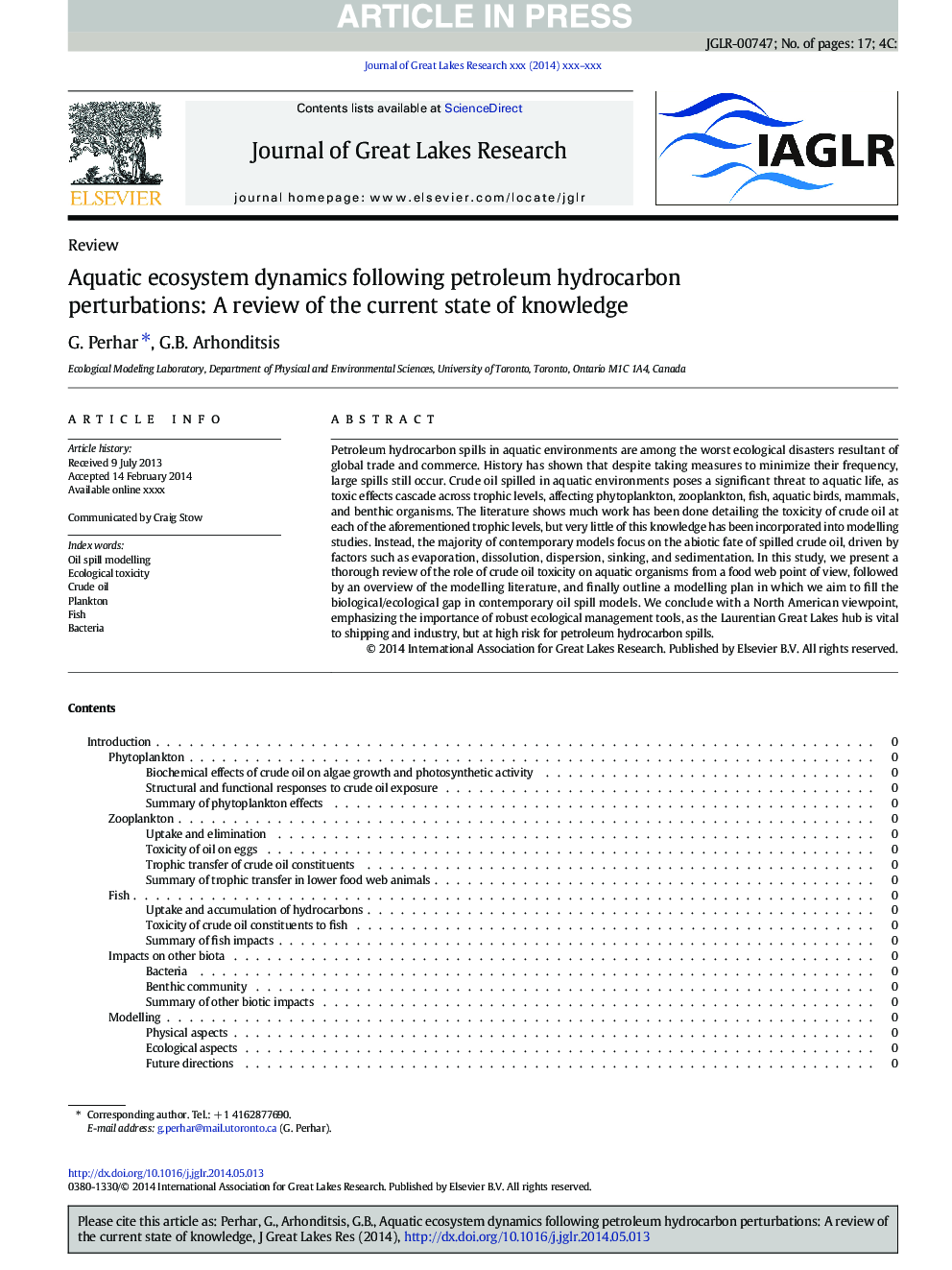| Article ID | Journal | Published Year | Pages | File Type |
|---|---|---|---|---|
| 4398338 | Journal of Great Lakes Research | 2014 | 17 Pages |
Abstract
Petroleum hydrocarbon spills in aquatic environments are among the worst ecological disasters resultant of global trade and commerce. History has shown that despite taking measures to minimize their frequency, large spills still occur. Crude oil spilled in aquatic environments poses a significant threat to aquatic life, as toxic effects cascade across trophic levels, affecting phytoplankton, zooplankton, fish, aquatic birds, mammals, and benthic organisms. The literature shows much work has been done detailing the toxicity of crude oil at each of the aforementioned trophic levels, but very little of this knowledge has been incorporated into modelling studies. Instead, the majority of contemporary models focus on the abiotic fate of spilled crude oil, driven by factors such as evaporation, dissolution, dispersion, sinking, and sedimentation. In this study, we present a thorough review of the role of crude oil toxicity on aquatic organisms from a food web point of view, followed by an overview of the modelling literature, and finally outline a modelling plan in which we aim to fill the biological/ecological gap in contemporary oil spill models. We conclude with a North American viewpoint, emphasizing the importance of robust ecological management tools, as the Laurentian Great Lakes hub is vital to shipping and industry, but at high risk for petroleum hydrocarbon spills.
Related Topics
Physical Sciences and Engineering
Earth and Planetary Sciences
Earth and Planetary Sciences (General)
Authors
G. Perhar, G.B. Arhonditsis,
